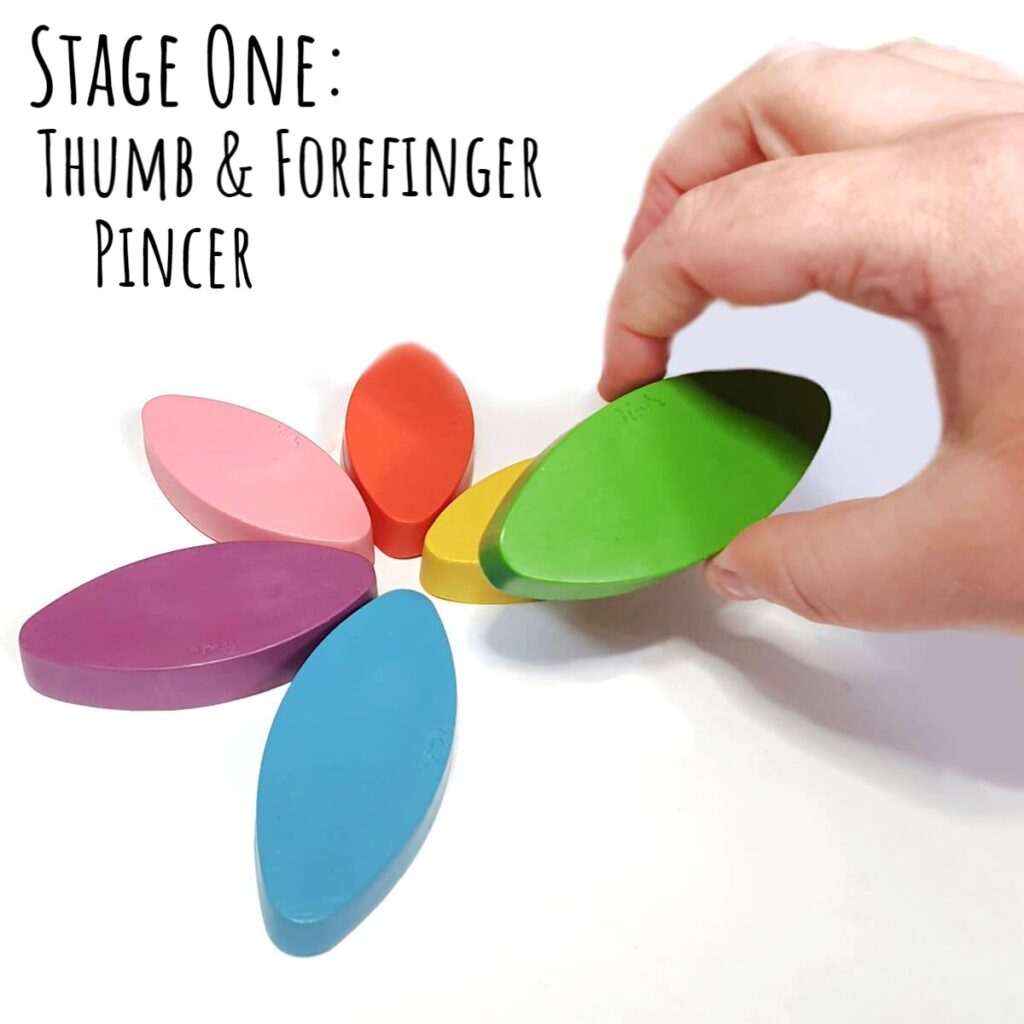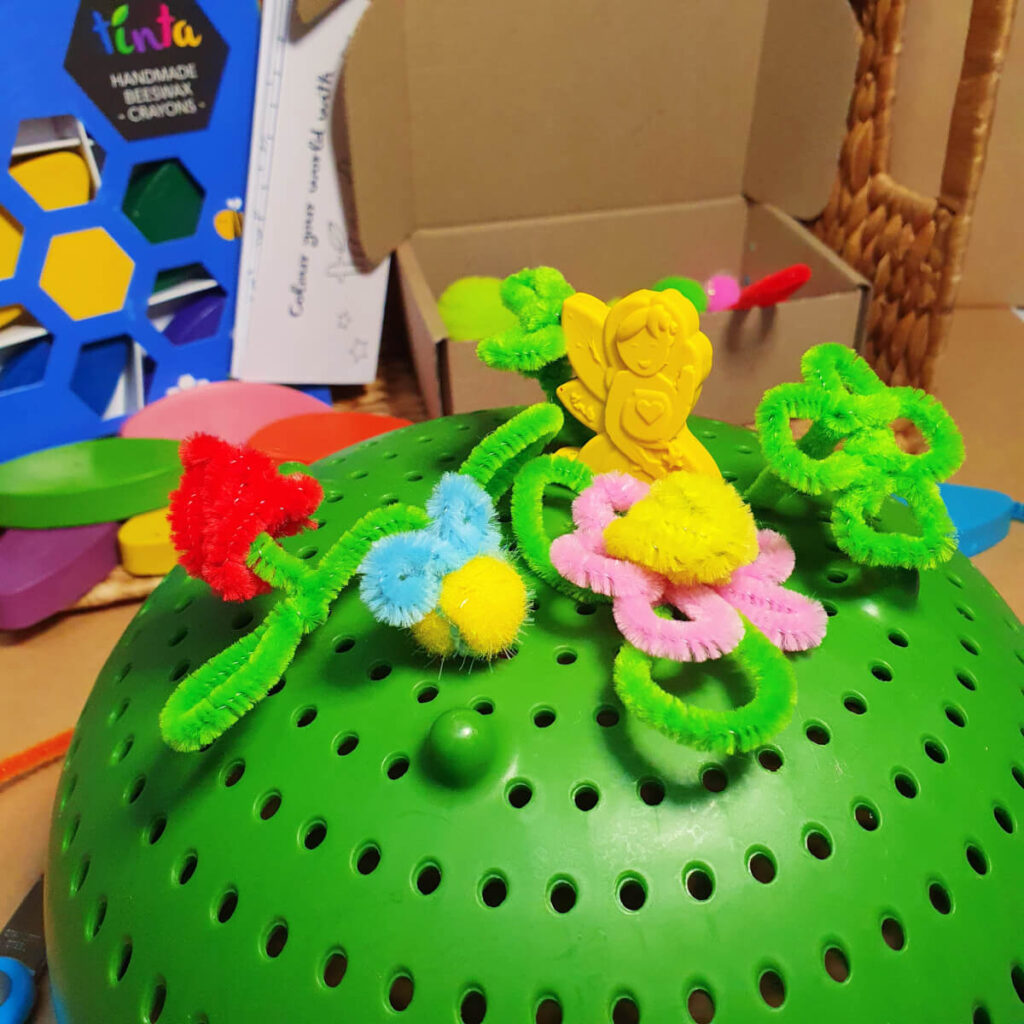~ Hello, Colour Lovers!
We’ve heard so much from all of you about the Kinder Kits this year, so today we’re stepping behind the crayon curtain to see what the big idea about our petals is.
Each one of our crayons is designed with something specific in mind, and in our petals it’s fine motor skills. But what are they? Fine motor skills are the movements we make using the small muscles in our hands, wrists, and feet. We use them almost every waking second to do pretty much anything – even typing at our desks!
It’s important to engage these muscle groups early on so by the time your kids are school-age they’re already ready and raring to go. The great thing is, it’s easy to do! A lot of the exploring and playing little kids do already helps to develop good motor skills, like playing with playdough and of course drawing and colouring in.
Why are fine motor skills important?
You might be asking why fine motor skills are still important to think about if the kids are using them anyway. If they’re avoiding something, like doing up buttons because they’re frustrated by the fiddliness of it all, then you might find they have more trouble with writing later on.
Doing easy repetitive tasks like buttoning and opening zips is an easy activity kids can practice every day on their own clothes. They can also use the laces, buckles, or velcro on their shoes. All of these activities engage different parts of their hands, which also helps to teach their muscles to work together.
You can also use other tools, like our petals for instance. We designed our petals specifically to help develop the motor skills everyone uses for writing and drawing. Because of their ergonomic shape, your kids can use their petals comfortably through every stage of learning.



Using crayons requires a bit more force than softer felt-tip pens, which helps to strengthen each of the muscle groups in your kids’ hands. In the bashing stage of colouring in, the petals help with grip strength. As your kids transition into holding the crayons like a pencil, it helps to strengthen the connections their muscles make to the stretchy tendons in their fingers.
Plenty of other things can also be great tools for developing fine motor skills. Let’s start a list of fun things we can put into a fine motor tool kit, then we’ll think of some games we can use them in.
Jump to
Your fine motor tool kit
Like a regular tool kit, you’re going to want a range of tools that work on different things within our 4 fine motor focus areas.
You might find yourself coming back to the same staple objects for a bunch of different purposes too. In Tinta’s version, we have the three P’s – pipe cleaners, pompoms, and petal crayons. We love them because they’re easy to find, gender neutral, and a great way for us adults to slow down and craft too. Plus, you’ll always get plenty out of every pack so you’re set even for a kids party!
Here’s some ideas for tools to include in your fine motor kit.
Fingers
First up in our fingers section is a box of Tinta’s petal crayons with some extra colouring sheets. Grasping and drawing with our petal crayons is good for developing the writing skills your kids will use in school, especially pencil grips.
If you’re looking to work on the pincer grip specifically but you don’t have any space left on the fridge for more drawings, pipecleaners to the rescue!
Another important thing fingers do is use other tools, like tongs and scissors. These tools are also great at teaching the fingers to work together to apply pressure to different things. For example, your kids can use tweezers to pick up the beads as well as their pincer grips.
Hands
For hands, you can’t go wrong with playdough or plasticine. It’s best if it starts out a little bit stiff, especially for kids about to start kinder. The stiffness of the playdough gives enough resistance against your kids’ hands so that it’s giving their muscles a little workout as they knead it, and if it’s too much then you can always give them a helping hand. You can even make your playdough together at home.
Lego and duplo are also great little exercise tools for your kids’ hands. Both styles also come with the added bonus of being something you can follow the instructions for or go off on your own adventures, so there’s something in it for every kid.
Wrists
For the focus area of wrists, we’re switching the game up. Opening jars and getting things out of them does need your kid’s wrists, but it’s what’s in this jar that really counts.
For a bit of active playtime, we’ve got two all-time-favourite kids dances on the cards – the macarena and the chicken dance. Those classic dance moves use all 360 degrees of movement in your kids’ wrists, plus gross motor muscles like the ones in their arms and legs.
Feet & Toes
To strengthen our last area of fine motor skills, we’re dipping back into our games jar for a playground card.
Playgrounds are great for developing the small muscles and ligaments in your kids’ feet as they run around and climb on all the different things.
Play equipment like rope webs, climbing walls, and sandpits encourage different kinds of toe grips. Footpaths, grassy areas, and rickety jungle-gym bridges encourage your kid to use different kinds of walking and running on the different surfaces, which helps leg and ankle strength too.
3 fine motor games
For your fine motor home bootcamp, we’ve got three games for each of our fine motor focus areas.
Spaghetti night
To strengthen your kid’s fingers, we’re pushing pipe cleaners into the small holes in a pasta-strainer. A great way to encourage your kid to keep at it is to introduce ‘levels’ to this game.
On the first level, it’s just one pipe cleaner. On the next, it’s one folded in half to make two. On a bit higher level, they might have to get the pipe cleaner in using tongs not their fingers. That’s a tricky one even for us!
Craft Corner creatures
In Craft Corner, we’ve got a bunch of colourful pompoms and pipecleaners to make some fuzzy new friends with.
Bending and twisting pipecleaners to make your own funny creatures is great for developing the muscles and ligaments in your kids’ hands and wrists, especially when you’re twisting the ends to attach them.
The tidy-up tub
It’s easy to make something as boring and everyday as tidying up fun with a little game. For a foot-based fine motor bootcamp game, it’s adults versus kids in picking up clothes with just your toes. All you need is two baskets and a load of washing!
We hope you’ve got some great ideas for your fine motor skills journey now.
For more on our petal crayons, subscribe to our newsletter in the section below. You can follow our socials for more interesting games to keep that development going, why we’re so passionate about fine motor development, our range, and much more. We’ll see you next time with tons of new ideas and games you can use at home.
Love, Team Tinta x







